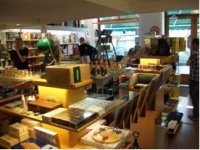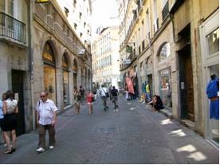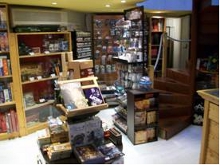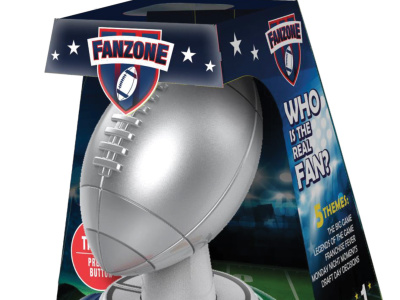 Rolling for Initiative is a weekly column by Scott Thorne, PhD, owner of Castle Perilous Games & Books in Carbondale, Illinois and instructor in marketing at Southeast Missouri State University. This week, Thorne notes the differences between American stores and games stores in France.
Rolling for Initiative is a weekly column by Scott Thorne, PhD, owner of Castle Perilous Games & Books in Carbondale, Illinois and instructor in marketing at Southeast Missouri State University. This week, Thorne notes the differences between American stores and games stores in France.Had the opportunity to speak at a summer meeting of the European Wizards of the Coast Marketing and Store Outreach staff in Aix les Bains, France, last week (just west of Geneva, Switzerland for those of you who like to keep track of these things. I'll be glad to come speak with your group too, on retailing, marketing or consumer behavior. Email me for details). As part of the meeting, we visited a couple of game stores the Store Outreach staff described as fairly typical of European stores. Given that, I noticed some significant differences between those stores and typical ones in America.
1. Small is the norm. Both stores had street frontage of, I estimated, less than 20 feet, or a little over 6 meters and reached back about 30 feet (about 9.1 meters), giving them roughly 600 square feet of selling space. Given the limited amount of space, with the exception of Games Workshop products, over 95% of the merchandise was racked spine out and both store did an excellent job of maximizing their available display space (Incidentally, this reinforces the importance of manufacturers making the spine or edge of their game as readable and attractive as the cover, since, unfortunately, in situations like this, the cover said manufacturer spent lots of time and effort to make as attractive as possible, CAN'T BE SEEN). Refreshments were limited to sodas kept in a small refrigerator behind the cash wrap. Aside from the cash wrap, neither store had much in the way of customer space in the retail area, no benches or tables to play at and no chairs for parents to relax upon while waiting for their children to complete shopping. The exception was a huge miniatures table, about 3 feet by 7 feet, set up to play. The sales clerk said they kept it there to encourage purchase and play of Games Workshop and Warmachine but that, when Christmas came around, they pulled the terrain off and converted it to a shelf for more boardgames and gift wrapping, which leads to:
2. Board games are king. This makes sense, given that Europe is the home of the Essen Game Fair. However, I was unprepared for the dominance of boardgames as they occupied three quarters of available shelf space in both stores. From what I gathered, boardgames are far and away the best-selling item in both stores, with trading card games a distant second, followed by miniatures and, waaaay back there in terms of sales, RPGs. I couldn't even find any collectable miniatures, such as HeroClix, though I did see advertising in the stores for them. Maybe due to the channels of distribution but it rather surprised me that neither store stocked any of WotC's recent run of board games. No Castle Ravenloft, Legend of Drizzt or Lords of Waterdeep. Of course, their size certainly weighs against them, given the size constraints of the stores.
3. Playspace is at a premium. Both stores had gaming areas, but less than a quarter of the size of the playing area you would find in a typical US store. Both were located on an upper level, accessed via a very narrow staircase, overlooking the store below, meaning that customers in the retail part of the store could easily hear people playing and talking in the gaming space above. Each area could seat anywhere from 6 to 12 people comfortably but not much more than that. I also didn't notice many of the posters that cover the walls of a typical American game store. Whether that is due to aesthetic choices on the part of the store or a lack of promotional posters received by the store, I am not sure, which leads to:
4. A Sense of design pervades the store. Unlike many American game stores, which have a mishmash of fixtures from different sources (mine included), here, with the exception of displays provided by the manufacturer, store fixtures all matched, avoiding the jarring effect of bookcases interspersed with rolling video racks or three different styles of display cases making up the cash wrap. Colors and shelf design were consistent throughout the stores, creating strong eye appeal.
Overall, I was quite impressed with the stores. The size, as noted above, was a bit off-putting to someone used to the size of American stores, but both stores did an excellent job of maximizing the use of the available space, without seeming crammed to the gills.
The opinions expressed in this column are solely those of the writer, and do not necessarily reflct the views of the editorial staff of ICv2.com.









